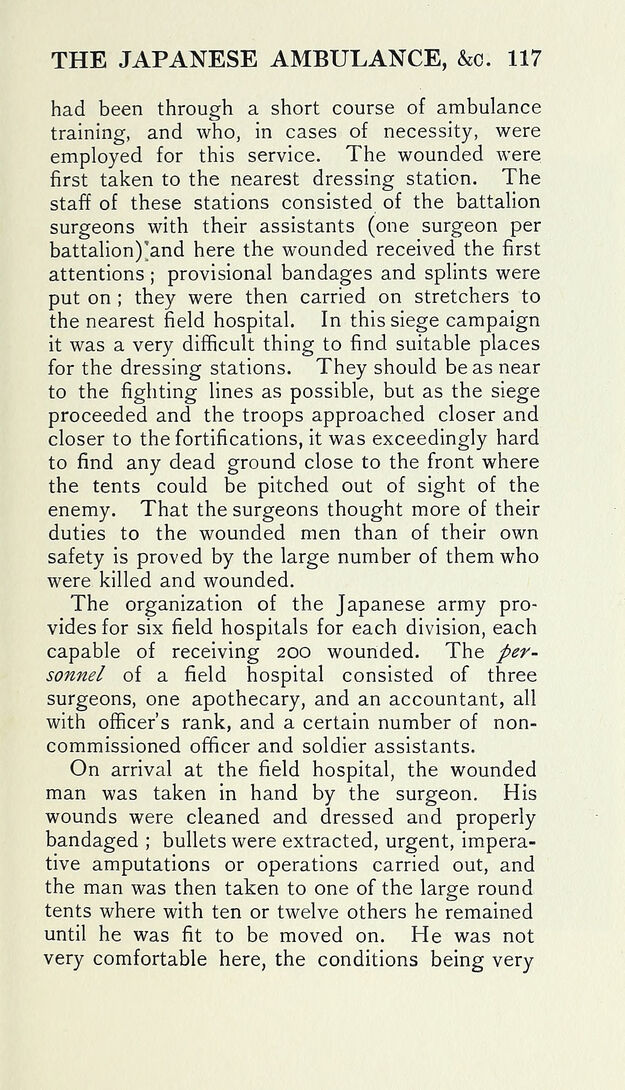
Full resolution (JPEG) - On this page / på denna sida - X. The Japanese ambulance and hospital service

<< prev. page << föreg. sida << >> nästa sida >> next page >>
Below is the raw OCR text
from the above scanned image.
Do you see an error? Proofread the page now!
Här nedan syns maskintolkade texten från faksimilbilden ovan.
Ser du något fel? Korrekturläs sidan nu!
This page has never been proofread. / Denna sida har aldrig korrekturlästs.
THE JAPANESE AMBULANCE, &o. 117
had been through a short course of ambulance
training, and who, in cases of necessity, were
employed for this service. The wounded were
first taken to the nearest dressing station. The
staff of these stations consisted of the battalion
surgeons with their assistants (one surgeon per
battalion)’and here the wounded received the first
attentions ;
provisional bandages and splints were
put on ;
they were then carried on stretchers to
the nearest field hospital. In this siege campaign
it was a very difficult thing to find suitable places
for the dressing stations. They should be as near
to the fighting lines as possible, but as the siege
proceeded and the troops approached closer and
closer to the fortifications, it was exceedingly hard
to find any dead ground close to the front where
the tents could be pitched out of sight of the
enemy. That the surgeons thought more of their
duties to the wounded men than of their own
safety is proved by the large number of them who
were killed and wounded.
The organization of the Japanese army pro-
vides for six field hospitals for each division, each
capable of receiving 200 wounded. The per-
sonnel of a field hospital consisted of three
surgeons, one apothecary, and an accountant, all
with officer’s rank, and a certain number of non-
commissioned officer and soldier assistants.
On arrival at the field hospital, the wounded
man was taken in hand by the surgeon. His
wounds were cleaned and dressed and properly
bandaged ;
bullets were extracted, urgent, impera-
tive amputations or operations carried out, and
the man was then taken to one of the large round
tents where with ten or twelve others he remained
until he was fit to be moved on. He was not
very comfortable here, the conditions being very
<< prev. page << föreg. sida << >> nästa sida >> next page >>